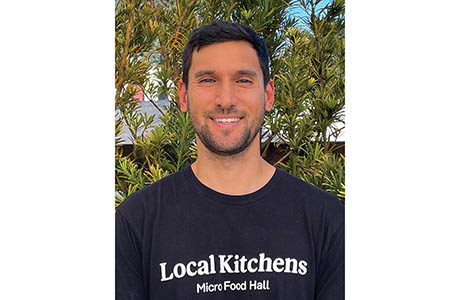— By Andrew Munday —
What’s next after ghost kitchens? Restaurants are expanding their reach with a new business model: a partnership with ‘Local Kitchens.’
The restaurant industry has evolved rapidly over the last decade, with much of this evolution accelerating since the pandemic. We’ve seen new technologies emerge with consumer behaviors evolving in tandem. These changes have forced restaurant founders to adapt, pushing them to seek out new partnerships for expansion and to explore new business models emerging within the industry.
When a restaurant is successful, the owners face a decision whether to expand with new brick-and-mortar locations or not. It is a risky undertaking that only grows riskier each day as costs for development and real estate continue to rise and the resources required to manage everything from kitchen staff to supply chains add levels of complexity that can be prohibitive for many. Couple that with the intense competition restaurants face within our industry, and the margin for error can be razor thin.
Enter the ‘ghost kitchen,’ a polarizing business model that emerged as a popular option for restaurants to capitalize on the ever-growing app and web driven delivery economy. Large shared kitchen spaces, offering leasing and production, can provide the necessary means to effectively compete in the food delivery app space, but there are drawbacks, of course. Profit margins can be thin, quality control can be difficult, and hospitality is all but cut from the equation. Restaurant brands themselves are often reduced to just a logo among a sea of other logos.
If ghost kitchens are a V1, offering a needed, but imperfect, solution to help restaurants survive, what’s next? Is there a new model that can keep the human element and real restaurant experience intact, while still making growth accessible and achievable?
This is how the vision for Local Kitchens was born. In 2020, during the height of the pandemic, Jon Goldsmith (CEO), Jordan Bramble (CTO) and I set out to build a new expansion model for restaurants that would meet these needs while empowering restaurant owners to truly thrive, not just survive.
Local Kitchens has become an important step beyond the status quo, bridging the technology and scale achieved by delivery apps and ghost kitchens, but with the true human experience and brand value that comes with a restaurant opening brick-and-mortar locations in new markets.
And as we grow, our partners grow, making for an exciting synergistic relationship.
Aoun (Owen) Ayyoub, corporate manager at SAJJ Mediterranean, was looking at new ways to grow the brand’s footprint with a minimal upfront cost, due to the onset of the pandemic. “With partnerships like Local Kitchens, we’re able to expand and test new markets via a combination of brick-and-mortar restaurants as well as several surrounding digital kitchens,” says Ayyoub. “Adding licensed kitchen locations to the equation, in partnership with Local Kitchens, brings new value to the network effect. They provide an agile and cost-efficient methodology for us to test demand and success in different areas, but also spread our brand across both digital channels and through physical real estate. We are in a great position to continue expanding with Local Kitchens in and outside California. We are now in a plug-and-play situation, thanks to the hard work and dedication from both teams behind the scenes to get us to this advantageous point.”
We’re positioning Local Kitchens to be the solution the industry needs for restaurants to thrive at scale and look forward to the continued growth for ourselves, for our partners and for the guests we serve.
— Andrew Munday is chief operating officer of Local Kitchens, a micro food hall that lets you mix-and-match your favorite local restaurants in one easy order.
